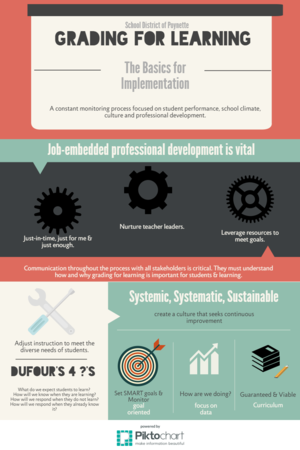|
The student’s grade more accurately represents the progress toward mastery of standards than traditional grading does. Standards-based grading reports tell us how students are performing on a set of clearly defined learning outcomes. Subject areas are subdivided into big ideas related to standards and their respective learning targets that students need to learn or master. The influence of positive and consistent work habits on student learning is reported separately from the academics.
Scores for a course are not calculated, as is traditionally generated by averaging or combining multiple scores across the duration of a class. Unlike traditional grade reports, standards-based grading measures students’ knowledge of grade-level content by reporting the most recent, consistent level of performance. So, a student might struggle in the beginning of a course with new content, but then learn and demonstrate proficient performance by the end of the course. Standards-based grading reports separately on academic tasks and work habits in order to give a more accurate report of student progress in both affective and academic areas. Measures like effort, participation, timeliness, cooperation are not blended into the mark for academic performance.
| 

